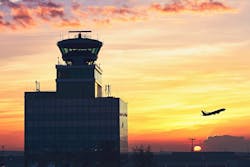Airline close calls happen far more often than previously known
NEW YORK - On the afternoon of July 2, a Southwest Airlines pilot had to abort a landing at Louis Armstrong New Orleans International Airport. A Delta Air Lines 737 was preparing to take off on the same runway. The sudden maneuver avoided a possible collision by seconds, Sydney Ember and Emily Steel report for The New York Times.
Continue reading original article.The Military & Aerospace Electronics take:
23 August 2023 -While Ember and Steel's long-form piece notes that technology can help alleviate the close calls experienced at myriad airports across the U.S., much of the issue is human in nature. Air traffic controllers - understaffed, and working mandatory overtime - can make mistakes. Pilots also can make mistakes. When this happens, collision warning technology has kept close calls from becoming real tragedies.
The Federal Aviation Administration (FAA) put out a statement following the publication of the Times story regarding "close calls."
"The U.S. aviation system is the safest in the world, but one close call is one too many. The FAA and the aviation community are pursuing a goal of zero serious close calls, a commitment from the Safety Summit in March," the agency wrote. "The same approach virtually eliminated the risk of fatalities aboard U.S. commercial airlines. Since 2009, U.S. carriers have transported more than the world’s population with no fatal crashes.
"Multiple layers of safety protect the traveling public, including: Traffic Collision Avoidance Systems on commercial aircraft, surface safety technology at the country's biggest airports, and robust procedures. Air traffic controllers and pilots all play critical roles.
The FAA says that since March, the agency has: 1. Issued a safety alert to ensure operations are conducted at the highest level of safety, including changes to procedures or training. 2. Announced steps the agency’s Air Traffic Organization will take to ensure supervisors devote their full attention to the operation and airfield during peak traffic. 3. Formed Independent Aviation Safety Review Team 4. Invested over $100M to reduce runway incursions at 12 airports 5. Launched Controller “Stand Up for Safety” Campaign 6. Began the search for the new surface situational awareness tool
Related: FAA asks for industry insights as it looks to link automated systems
Related: FAA authorizes Pyka's large, highly automated crop and cargo electric aircraft
Jamie Whitney, Senior Editor
Military + Aerospace Electronics
